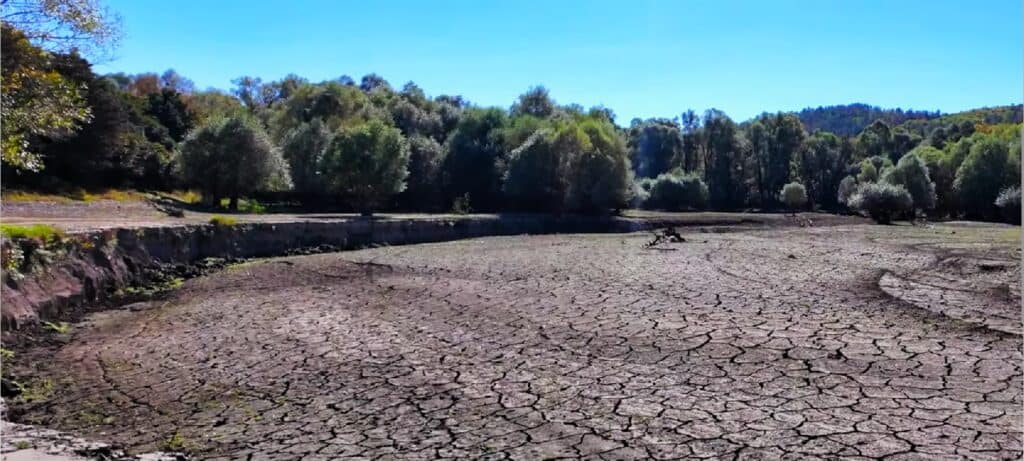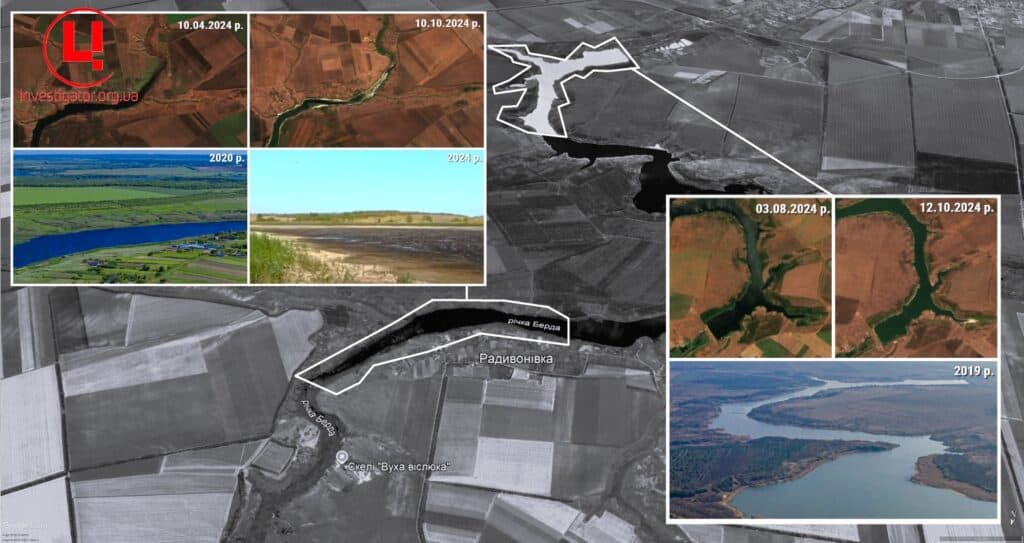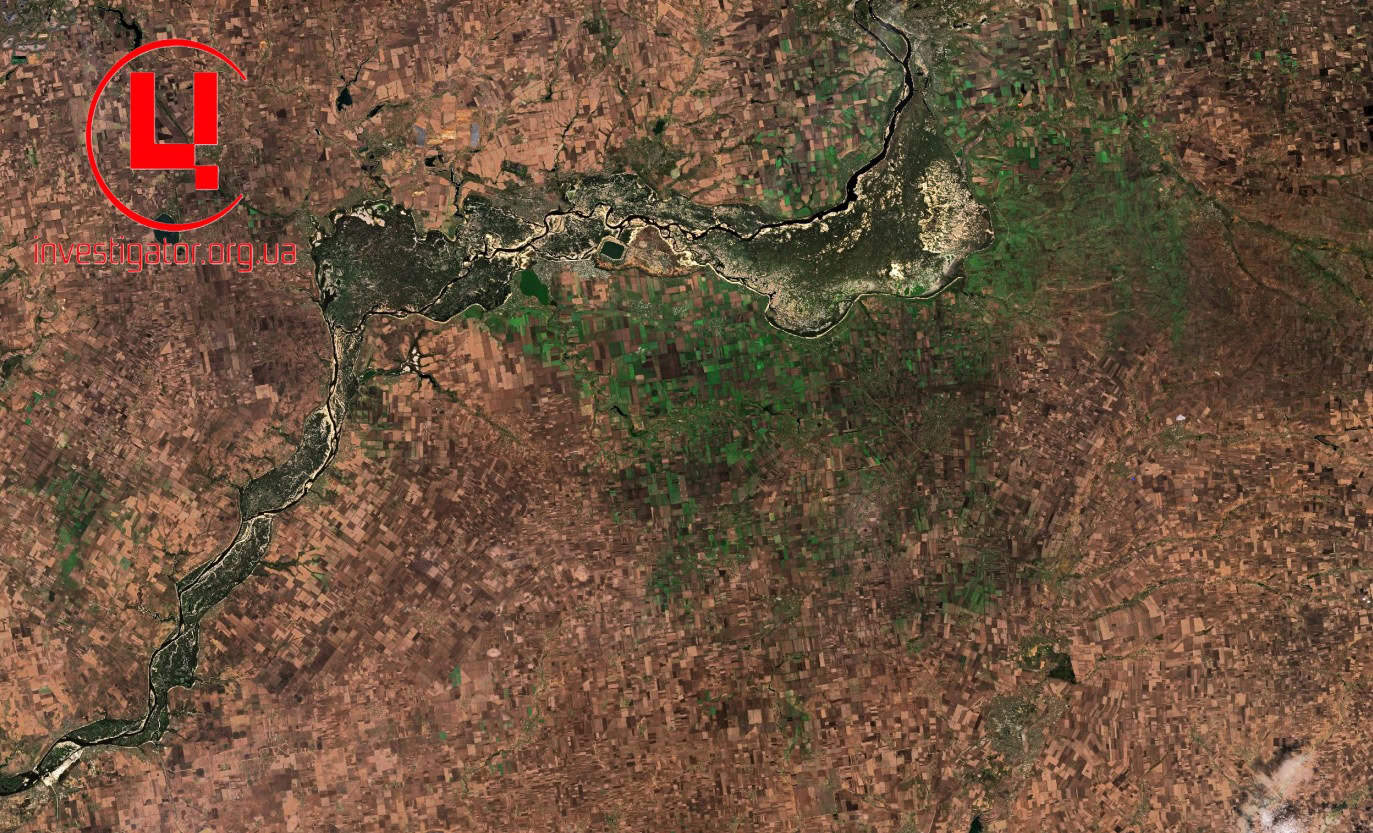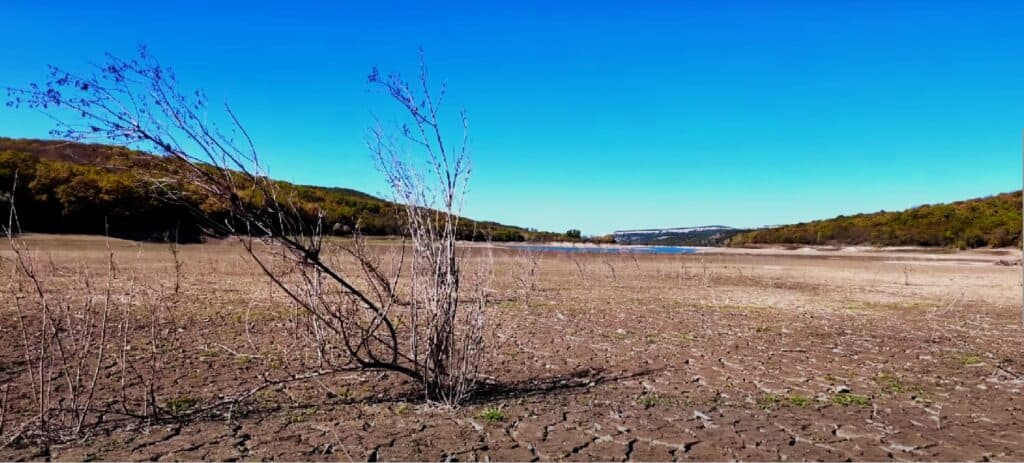

Critical shortage of drinking water in the occupied south of Ukraine
Rivers and lakes in the occupied south of Ukraine have become shallow or completely dry. This has created an additional shortage of drinking water, which local residents have already faced due to the Russian blasting of the Kakhovka Dam in 2023, which led to the drying up of the Kakhovka Reservoir, the Centre for Journalistic Investigations (CJI) reported.
Due to the drying up of the rivers, water reservoirs in the south of Zaporizhzhia, Kherson and Donetsk regions and in Crimea have become shallow, the CJI said. For example, the water level in the Berdiansk Reservoir on the Berda River, which remained the only source of drinking water for the occupied Berdiansk, has dropped to a critically low 19 metres and continues to drop by 1-2 centimetres every day.

The Berda riverbed and the reservoir on satellite, archival and recent images. Photo: social media. Collage: investigator.org.ua
As CJI noted, Berdiansk also received water from the Kakhovka Reservoir. Excessive consumption of water from Berda after the destruction of the Kakhovka Dam and an abnormal drought caused a sharp drop in the water level in Berda this autumn.

Satellite image of the former Kakhovka Reservoir on the Dnipro River. 22.10.2024 Photo: apps.sentinel-hub.com
A number of lakes and ponds have dried up in the occupied part of the Kherson region, which was most affected by the dam destruction. These include the villages of Bekhtery, Nyzhni Sirohozi, Novooleksandrivka, Ivanivka, Chornianky Lake, and Lemurian Lake.

Comparison of satellite images of the largest water bodies in the occupied part of the Kherson region in May and October 2024: Google Earth, apps.sentinel-hub.com Collage: investigator.org.ua
The Staryi Krym Reservoir on the Kalchyk River, which supplies water to occupied Mariupol, has also become shallow.
The drying up of rivers in the Azov Sea shore affects the salinity level and, accordingly, the ecosystem of the Azov Sea, where the number of jellyfish has increased, the CJI noted.
In Crimea, which has always lacked its own fresh water, the destruction of the Kakhovka Reservoir and drought caused the Bilohirsk Reservoir to become shallow and the Taigan Reservoir, which is connected to it, to dry up.
In August 2024, the Crimean Department of Hydrometeorology and Environmental Monitoring also reported that water inflows to the Partizanske and Chorna Richka reservoirs had stopped due to the drying up of rivers.

The Partizanske Reservoir on the Alma River to supply water to Simferopol. October 2024. Photo: social media